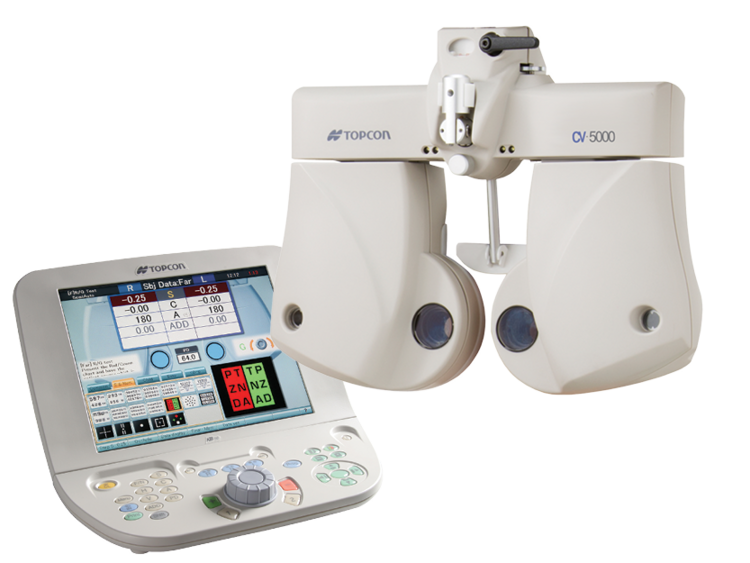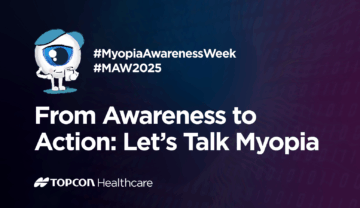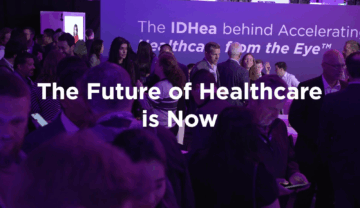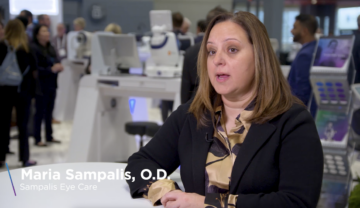
Finding Opportunity in Response to Challenging Times
As we reshape how we interact with patients to make them feel safe and welcome in the clinic, we can also keep an eye on practices and protocols that will improve the encounter in the future.
The past few months have undoubtedly been a challenging time in history, and the optometric field has certainly been impacted. The earliest days and weeks of the COVID-19 pandemic were perhaps the most harrowing, with patient volume down across the industry, and many practices facing the prospect of shuttering forever. The months that ensued saw a return of some sense of normalcy, although tempered by doubts about what may come next.
To say that adjusting to this new normal has been perplexing and humbling would undersell the difficulties each and every one of us has faced, to say nothing of the impact on our patients. It is difficult to describe the stress and anxiety I have heard from my colleagues as we figure out in real time how best to make patients and staff feel safe and welcome in our clinics while maintaining proper distancing measures, implementing hygiene and sanitization protocols, and responding appropriately to dynamic public health recommendations.
And yet, I remain optimistic and hopeful for the future, for our profession, and for how we can learn from these times to better serve our patients.
The opportunity inherent to challenging situations
Any challenge, on any scale, presents three distinct phases in which our instincts tell us to react, refine the approach, and recover.
When crises occur, the demands of the immediate leave little time for anything else but attending to the highest priority concern. In the earliest days of the COVID-19 pandemic, patients—and all of us—were uncertain about this invisible threat and what we could do to keep ourselves safe. In response, optometrists found ways to adjust working conditions on the fly to ensure practices could open, re-open after closure, or stay open during a fluctuating situation. Among other measures, we were guided by public health recommendations to observe social distance and wear personal protective equipment; temperature checks became the norm, and many of us integrated telemedicine. Overall, as a profession, we reacted quickly and appropriately to ensure patients had continual access to crucial eye care services.
The second phase has involved refining and adjusting response measures in order to begin to find a sense of normalcy. For some, the stress has not necessarily dissipated, yet we have also gained the ability to view the question of how we attend to patients’ needs a bit differently. We are still in the midst of reacting; however, we are doing so with some perspective on what has worked in our individual practices and what has not, and we are guided by the knowledge gained from the collective experience of optometric colleagues from around the world. The focus has shifted somewhat from solving an immediate problem to key questions about what we can do differently, now and in the future.
To be clear, we have not yet fully entered the third stage of rising to a challenge. We can look forward to a
post-pandemic world where COVID-19 is not an omnipresent reality. How and when we arrive there is unclear. However, we can begin preparing for that reality right now with the choices we make about how we intend to reshape the delivery of care to patients. Most certainly, opportunity abounds to remake the future of eye care for the better.
Solutions through technology
Just before the shutdown, our practice was in the midst of relocating. After a brief period of uncertainty, we settled on a new location and began to build out a clinic that would be friendly to both patients and staff. We had the rather unique opportunity to build that space from the ground up, with the needs of the pandemic in mind, whereas many of my colleagues found themselves retrofitting many of the same kinds of practices and protocols into their existing operations. Nevertheless, the underlying question was similar for all of us: what changes could we make to ensure patients’ safety while being mindful of how those changes could also provide long-term clinical and financial benefit?
Our first considerations for the new practice were geared toward environmental safeguards. The retail area was made intentionally large, both to display products and to ensure customers could keep distance from one another. We installed an ultraviolet HVAC system to sanitize and sterilize the air. Other, smaller measures were also included: we obtained a thermal camera for temperature assessment when patients come in and dry mist foggers to clean frames and upholstery in the exam rooms after use. Overall, we did a lot of research and gathered a lot of information about best hygiene and sterilization practices that were based on sound science and backed by strong recommendations. While safety was priority one, we were also mindful of the need to create a welcoming and positive experience for patients.
As for actual patient interactions, our practice has always placed a high importance on technology for what it can do to streamline our workflow, create efficiencies, improve diagnostic acumen, and attract patients to the clinic. Working under pandemic conditions has only strengthened our resolve in this regard. It starts at the front desk where the greeting station indicates to the pre-service station that a patient has arrived. A pre-service staff member leads the patient to our pre-testing room where they undergo the full cadre of testing and diagnostics. The patient is in the pre-testing area for approximately 10 to 12 minutes with little-to-no wait time. The full battery of testing is performed, including auto-refraction, visual fields, OCT scans, and widefield fundus imaging. I have access to these results before the patient enters the room, and in a lot of cases, I have already established a differential diagnosis. I can then direct my examination to follow-up on red flags without wasting time.
We have found that patients greatly appreciate the use of technology in our practice, particularly in how it helps them understand the health of their eyes. In fact, it is one of the reasons patients come back time and again: they want to know whether there has been any change in their OCT, widefield fundus imaging, or other diagnostic test. In some respects, the pandemic has accelerated a widescale embrace of technology in our society, for example, digital communication to solutions for establishing safer working conditions. That is likely going to propagate into almost every aspect of our patients’ lives, including when it comes to managing the health of their eyes. Simply put, patients will look for the smart use of technology in an eye care clinic because, whether fair or not, there is a perception that the devices we use are indicative of the level of care we are providing.
As early adopters of technology, we eagerly sought out solutions that would help us safely get back to practice in the new normal. We found that two pieces of equipment in particular have elevated the care we are now providing. First is our digital phoropter, the CV-5000s, which provides patients with a state-of-the-art refraction while allowing me to stay at a safe distance, and out of the patient’s breathing space, while conducting a crucial portion of the examination. The second is the multimodal, swept source DRI OCT Triton. This system combines both swept source OCT technology and non-mydriatic fundus photography on one platform. In the context of the pandemic, and in the interest of minimizing touchpoints as well as time in the clinic, it has become very important to reduce the need to move patients to different instruments. Using multimodal imaging also means there are fewer machines to clean between each patient, making our practice more efficient.
The wide range of reports and clinical measurements available on the Triton gives me all of the information I need to diagnose and monitor ocular pathology and manage general eye health. The added functionality of the Triton, which includes deep penetration to the sclera and choroid, the ability to penetrate cataracts and other media opacities, and uniform sensitivity at the top and bottom of the scanning window, provides me with additional tools to promote clinical confidence. In addition, within 3 to 4 minutes I can get anterior to posterior imaging and access it all remotely through our review stations and network.
Moving forward with the patient in mind
Every practice is, of course, different, and its dependency on technology will also differ. At the same time, the COVID-19 pandemic has underscored the need to reconsider the patients’ experience within the clinic. While the focus has shifted beyond creating positive experiences to considering how to allay fears and anxieties, the principle is the same: you have to understand what the consumer wants. This may mean questioning the things you have done conventionally over time within your clinical practice. The most important question we might ask ourselves now when considering diagnostic testing is, “Is it really necessary?”
The future is certainly unknown. While that has potential to raise anxiety, it also means we have a chance to reshape our practices and our profession for the better. Now is the time to step outside your comfort zone while trying new approaches, think about expanding offerings, and really question the necessity of each part of the examination routine. Challenge presents opportunity, if we look hard enough.

Digital Phoropter
CV-5000S
Upgrade your manual phoropter to the all-digital CV-5000S

ABOUT THE AUTHOR
Dr. Kerry Salsberg earned his Doctorate of Optometry from the University Of Waterloo. He was awarded the T.T. Beattie Award for Orthoptics and Visual Training and is a proud member of the Ontario Association of Optometrists and Regional Administrator of VisionSource Canada. He has been in practice for 21 years.
Financial disclosures: None



